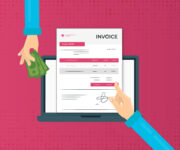Buy-now, pay-later (BNPL) services have grown in popularity in recent years, and amid the Covid-19 pandemic, it has witnessed a significant spike in customer growth.
According to estimates, the global BNPL industry is expected to grow by 10-15 times, exceeding $1 trillion in the annual gross volume of goods. Millennials are now 37% less likely to carry a credit card because they prefer the more straightforward repayment plans of BNPL platforms; it’s easy to see why this is the case.
Not to mention the fact that most BNPL platforms have a cap on late fees, which are typically only a few dollars, at a time when credit card interest rates can be as high as 20% per year, resulting in hundreds of dollars in interest debt.
However, as the buy now, pay later industry grows and matures, a few “myths” about usage and irresponsible spending have evolved.
Popular Misconceptions About Buy Now Pay Later (BNPL)
Even while point-of-sale (PoS) consumer finance has grown in popularity worldwide, customers continue to have reservations about the BNPL mechanism. Given the current financial impact COVID 19 has had on the economy, these concerns are well-founded.
For instance, many people are scared about becoming trapped in a debt cycle. Consumers are fed up with lenders burning their fingers, and others are still struggling to repay large debts with exorbitant interest rates.
Because Buy Now, Pay Later is a relatively new credit arrangement on the market, information gaps have led to certain misconceptions.
Debunking Misconception About Buy Now Pay Later (BNPL)
Research tells us a common misunderstanding regarding BNPL: 44% don’t know whether it means ‘taking on debt’ or ‘deferring a payment. This figure is around 57% among young adults (18-34 years old).
This is due to a general lack of financial literacy, and while the market has grown, 1 out of every 5 consumers believes that BNPL service providers will take advantage of them.
Here are a few facts that dispel the myths about using Buy Now, Pay Later options:
-
BNPL will replace credit card companies
Doubts have been raised about whether credit cards would become extinct due to the rise of Buy-Now-Pay-Later. Unfortunately, the answer is “No”.
While the concept of using credit is quite similar, the functionality and value-generating connected with the transaction are vastly different.
Currently, the average BNPL transaction amount is $155, with only 18% of people utilising the service 1+ times per month. In contrast, it is usual for people to use credit cards 1+ times per day for transactions spanning a broader price spectrum.
While BNPL continues to expand quickly, a significant portion of daily purchases is not serviced by the company. In a study comparing credit cards and BNPL, 35% said they would maintain their credit cards if BNPL could replace them, while 38% said they would continue with credit cards.
This is partly due to convenience, but it also has to do with distinguishing qualities like brand loyalty, rewards programs, and credit building.
-
BNPL will encourage reckless spending
Because of the low entrance barriers, BNPL allows a much broader demographic to purchase things they otherwise would not.
The fact that 43% of consumers who have used this service had missed at least one payment points to a more significant issue; people are more concerned with how they can buy rather than whether they should buy, and as a result, they are paying high delinquent fees.
Merchants are making it easier to eliminate friction and hesitation from the buying process. However, BNPL eliminates the rational reasoning process and the question of “can I afford this?” While it would be irresponsible to disregard this, one counterargument is that this problem is not exclusive to BNPL and is widespread through credit card usage.
When choosing between a credit card and a BNPL solution, consumers gain the advantage of making better balance purchases over time without being exposed to credit cards’ high APR charges.
Furthermore, fee transparency has been underlined as a differentiating aspect compared to credit cards, which have a negative reputation due to hidden fees.
-
BNPL targets subprime/new borrowers
The word BNPL is not new, as it refers to people who have received a standard loan. But, on the other hand, the distinctive value offered is centred on increased efficiency and lower entry barriers for individuals.
However, the term is sometimes associated with alternative financing for subprime and younger people branded as “unbanked” because they lack access to standard financial institutions.
While some BNPL providers openly state that younger millennials are an underserved market due to their lack of credit history, the target demographic has grown over time to accommodate a broad range of customers.
According to research, most BNPL customers earn $75,000 or more, and 75% have at least a bachelor’s degree. This inference is that older, affluent, educated persons — prime borrowers – are equally as likely to be customers as subprime borrowers seeking alternative financing solutions, implying that the target audience is broader than initially assumed.
The Bottom Line
Even as we work through some of the core BNPL misunderstandings, there is a clear foundational issue in the lack of financial literacy in relation to Fintech solution creation.
While it’s understandable to be wary, the demand for alternative funding continues to rise. As a result, BNPL can benefit both unbanked individuals seeking non-predatory loan alternatives and regular consumers trying to budget their consumption habits more responsibly.
Going forward, both BNPL providers and collaborating financial institutions must focus on financial literacy to ensure responsible borrowing while building the trust that the finance industry hasn’t seen since before the recession.
BNPL models will benefit major payments participants such as Fintech selling BNPL services, payment processors, payment networks, retailers, and consumers in a post-COVID environment. Furthermore, the concepts can be applied to industries other than retail, such as travel and aviation.
Finezza is a cloud-based, user-friendly lending lifecycle solution that uses fully integrated functions to streamline loan disbursement. To learn more about our services, please contact us.




Leave a Reply